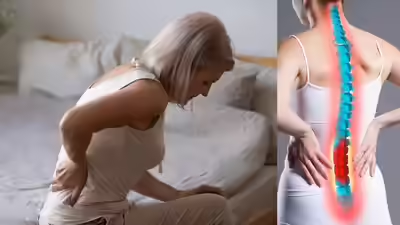Osteoporosis, a disease marked by thinning and fragile bones, has been called a silent epidemic. It rarely shows symptoms until the damage is severe, when a minor fall or even a simple twist of the body results in a fracture. Doctors warn that the condition, long under-recognized, is on the rise as populations age.
A Disease That Hides in Plain Sight
Most patients discover osteoporosis only after a fracture—often of the hip, spine, or wrist. Subtler signs may include a gradual loss of height, back pain, or a stooped posture, but these are easily dismissed. Specialists describe the condition as “quiet but devastating,” capable of reducing independence and quality of life in older adults.
Why Bones Grow Brittle
Bones reach peak strength in early adulthood. After midlife, breakdown begins to outpace renewal. In women, the decline accelerates after menopause as estrogen levels fall. Risk factors range from genetics and aging to smoking, alcohol, poor diet, and prolonged use of certain medications like steroids. Vitamin D deficiency and sedentary lifestyles further compound the problem.
Testing and Treatment
A DEXA scan, which measures bone density, is the most reliable tool for early detection. Once diagnosed, treatment often combines medication with lifestyle changes. Drugs such as bisphosphonates help slow bone loss, while newer therapies target rebuilding bone.
Nutrition and exercise remain the cornerstone of prevention. Experts recommend diets rich in calcium and vitamin D, along with regular weight-bearing activity such as walking, resistance training, and balance exercises like Tai Chi. Quitting smoking, limiting alcohol, and preventing falls at home are also critical steps.
The Urgency of Prevention
Public health experts argue that osteoporosis must be addressed earlier—ideally starting in midlife. By the time a fracture occurs, much of the damage is already done. Early awareness, routine scans for those at risk, and steady lifestyle habits can preserve bone health well into old age.
“Every fracture in an older adult should be treated as a red flag,” one physician noted. “It’s often the first and only warning that the bones are dangerously weak.”


